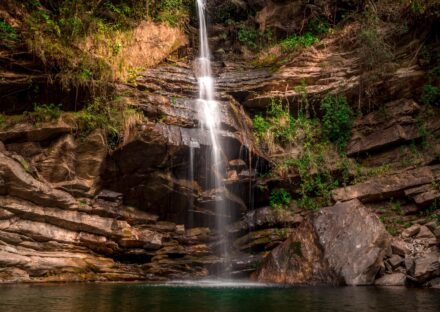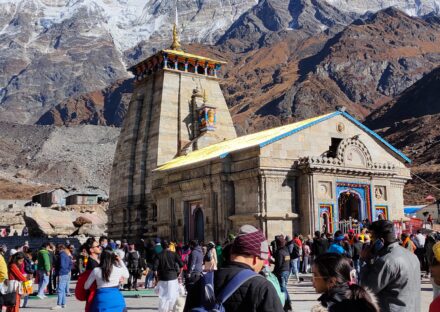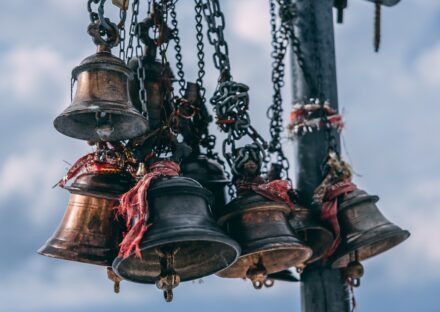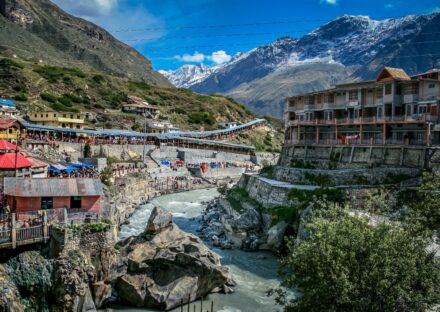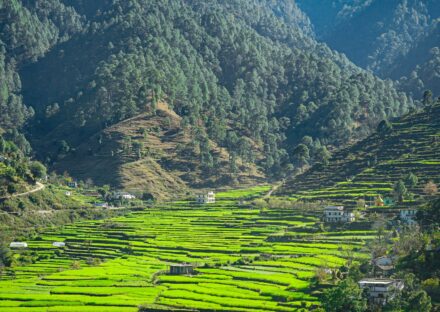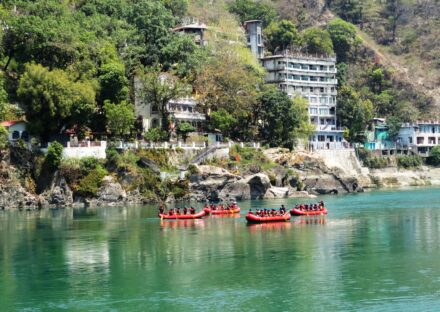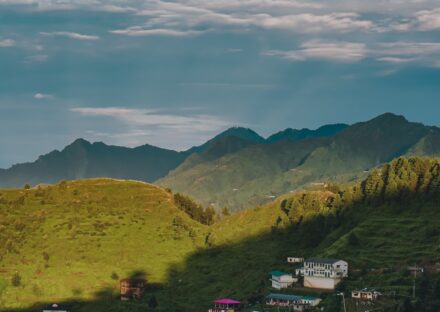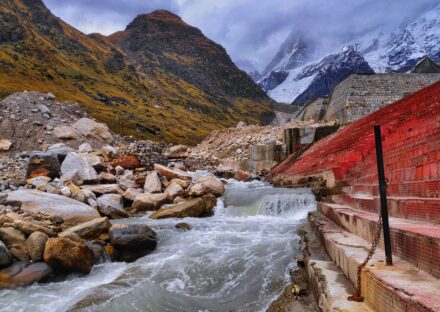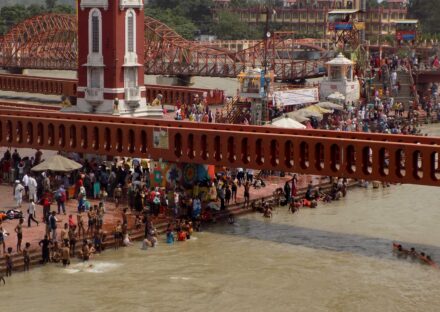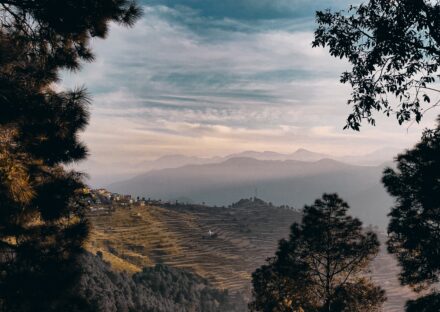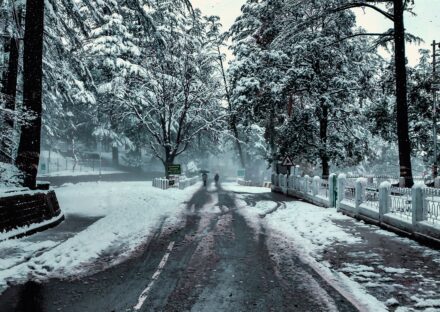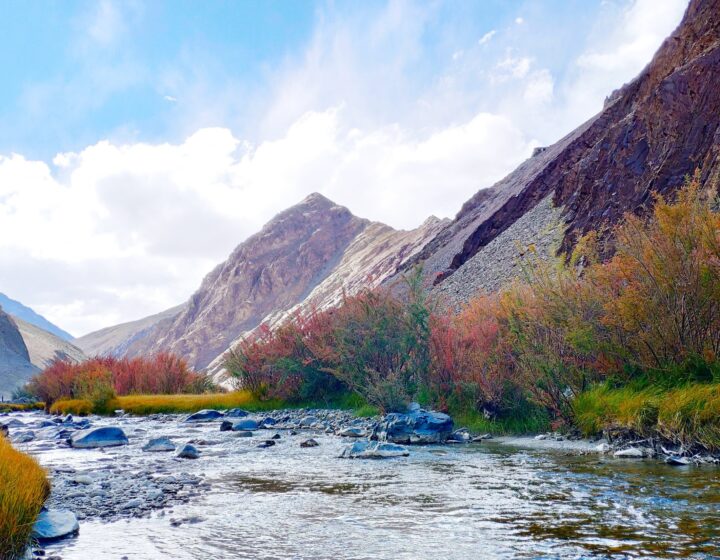Tour overview
Uttarakhand known as “ The Land of Gods” is one of the famous places for every age of people including youngsters, honeymoon couples, families and Senior Citizens that is the reason Uttarakhand is having everything for everyone.
Included
- Pickup and Drop from Airport/Station
- All Transfers & Sightseeing in Personal Vehicle
- Daily Breakfast & Dinner
- Accomodation in given hotels
- Driver charge and taxes Included.
Not Included
- Entrance Fees
- Guide Gratuity
- Lunch
Day 1- :
Delhi Haridwar (220 Kms / 6-7hr) Height: 310 MTS.
Haridwar: The holy city of Haridwar translates to "Gateway to God," and the breathtaking city,
replete with temples, is a magnet for religious pilgrims from all over the globe. Religious festivals
hold even further draw, and tourists can’t help but be compelled by the city’s aura of intense
spirituality. Haridwar is one of the seven holiest places of the Hindus, located on the banks of
River Ganges. The sheer numbers of people gathering around Har-ki-Pairi Ghat give Haridwar a
chaotic but reverent feel.
Day 2 -:
Haridwar Barkot (210 kms/7-8hr) Height: 1352 MTS.
Barkot via Mussoorie, enroute to Mussoorie Lake & Kempty Fall in Mussoorie. Later, I drove
straight to Barkot. Check into the hotel arrival in Barkot. Overnight stay at Barkot. Barkot Weather
- Generally pleasant in summer, the temperature ranges from 25-30 degree Celsius, Winter: The
Days are pleasantly cool but the nights are cold,temp ranges from 10 deg to 05 deg.
DAY 3 -:
Barkot / Yamunotri / Barkot {36kms drive & 6 kms Trek (one side)} Height: 3235
MTS.
Early morning after breakfast (packed breakfast), drive to Jankichatti / Phoolchatti & star trek
from here to Yamunotri (6 kms) (Either by walk or by horse or by Doli at your own cost). After
taking bath in Jamnabai Kund's warm water and having "Darshan" of "Yamunaji" return to
Jankichatti by trek. Later drive towards Barkot, Overnight stay at Barkot. Yamunotri Temple:
Maharani Gularia of Jaipur built the temple in the 19th Century. It was destroyed twice in the
present century and rebuilt again. At Yamunotri, One can cook rice by packing it in a cloth and
dipping it in the hot water of the Tapt kund. Pilgrims take this cooked rice home as "Prasad".
Here near the temple "Pooja" can be offered to Divya Shila. Surya Kund: There are a Number of
thermal springs near the temple, which flows into numerous pools. The most important of these
is Surya Kund. Divya Shila: A rock pillar, worshipped before entering the Yamunotri Temple.
Yamunotri Weather - In summer the maximum temp is 18 degrees and the minimum is 10
degrees celsius. The days are pleasantly cool but the nights are cold.
DAY 4 -:
Barkot Uttarkashi (100kms/4hr) Height: 1352 MTS.
Morning after breakfast, drive to Uttarkashi. Check into the hotel arrival in Uttarkashi. Visit Kashi
Vishwanath Temple in Uttarkashi. Overnight stay at Uttarkashi. Uttarkashi is home to a number of
ashrams, temples. The name of the town reflects its similarity to and location (as north of) the city
of Kashi (Varanasi). Similar to Varanasi, the town of Uttarkashi is also situated on the banks of
River Ganga. Vishwanath temple - Vishwanath temple is one of the oldest Shiva temples in
Northern India. Re-constructed in 1857 by Maharani Khaneti Devi of Tehri State in the ancient
architectural style. It is situated at the heart of the town. A massive iron trident, symbolic of divine
mother’s, is erected and worshiped from time immemorial at the temple complex. Ganeshji,
Sakshi Gopal, Markandeya Rishi’s small shrines are also part of the temple complex. Akhand
Jyoti as well as Akhand Abhishek, special aarti at morning and evening are offered. As per
Skunda Puran, Uttarkashi is known as ‘Saumya Varanasi’, the abode of Lord Shiva in Kaliyug
and counted as one of the twelve Jyotirlingas. Shakti temple - Right in front of the Vishwanath
temple is Shakti temple. It has a big ‘Trishul’ of about 6 meters in height and a circumference of
90 cm. at bottom. Though there are different views about the making of this, the upper part of it
seems to be made up of iron and the lower one is of copper. As per the epics this Shakti was
thrown on the devils by the Goddess Durga(Shakti), hence it gets its name. Since then this
Shakti has been erected over here. Uttarkashi Weather - Generally hot in summer, the
temperature ranges from 30-35 degree Celsius but nights are pleasant, Cold in winters.
DAY 5 -:
Uttarkashi Gangotri Uttarkashi (100kms/3-4 each side) Height: 3048 MTS.
Early morning (packed breakfast) drive to Gangotri, enroute at Gangnani take a holy dip in
Garam Kund, further drive to Gangotri via beautiful Harsil Valley. Harsil is famous for its natural
beauty and for the majestic views of the Deodar trees and mountains. On arrival at Shree
Gangotri, take a holy dip in the sacred river Ganges which is also called Bhagirathi at its origin.
Perform Pooja and Darshan, after that relax for some time in the lovely surroundings. Later, I
drove back to Uttarkashi. Overnight stay at Uttarkashi. Gangotri Temple: The temple was
constructed by the Gorkha General Amar Singh Thapa in the 18th Century, and is situated on the
right bank of Bhagirathi. Gangotri Weather - The maximum temperature during summer can go
up to 20° Celsius. Summer nights can get cooler with a minimum temperature of 10° Celsius.
Light woolen clothes are required while visiting Gangotri during summer. Winter season is very
chilly in Gangotri. Gangotri will be covered in sheets of snow during winter. Pilgrim centers
remain closed throughout winter due to heavy snow falls.
Day 6 -:
6: Uttarkashi Guptkashi (220kms/8-9hr) Height: 1319 MTS.
Morning after breakfast, drive to Guptkashi via Moolgarh & Lambgaon. Enroute you can see the
beautiful river Mandakini at Tilwara. The Mandakini river comes from Kedarnath, drives alongside
the river to reach Guptkashi, and visits Ardhnarishwar Temple in Guptkashi. Check into the hotel
arrival in Guptkashi. Overnight stay at Guptkashi. Guptakashi:- The name Gupt Kashi means
"Hidden Benares. Mythology describes how when the Pandava brothers were searching for a
glimpse of Shiva, Shivji first concealed himself at Guptkashi, but later fled from them further up
the valley to Kedarnath, where the Pandavas finally got their wish fulfilled. There are more
tangible connections as well-the Kedarnath pandas (priests) live in Guptkashi during the winter
months, and after the Kedarnath temple closes for the winter, the image of Kedarnath passes
through Gupt Kashi on its way to Ukhimath (across the valley), where it stays for the winter.
Guptkashi Weather - pleasant in summer, the temperature ranges from 25-30 degree Celsius.
Cold in winters.
Day 7 -:
Guptkashi / / Kedarnath(30 kms by road & 19 kms Trek one way) Height: 3384
Morning after breakfast, go to kedarnath. Enjoy Kedarnath Darshan & back your hotel. Overnight
stay at Kedarnath. By Helicopter: Morning our driver will transfer you your pre book Helipad. After
Back our car will drop you at the Hotel for rest. By Trek: Morning our driver will drop you at
Sonprayag then you have to take a local jeep for Gaurikund & then your trek strat for kedarnath
ji. After darshan you follow the same & back to Sonpraag. There is a big parking issue so the
driver will go back to another palace if his contact no. is not working then you have to arrange
another taxi or wait for your driver & send the message to any other driver. Kedarnath: The
Kedarnath shrine, one of the 12 jyotirlingas of Lord Shiva, is a scenic spot situated, against the
backdrop of the majestic Kedarnath range. Kedar is another name of Lord Shiva. According to
legend, the Pandavas after having won over the Kaurava in the Kurukshetra war, felt guilty of
having killed their own brothers and sought the blessings of Lord Shiva for redemption. He
eluded them repeatedly and while fleeing took refuge at Kedarnath in the form of a bull. On being
followed he dived into the ground, leaving his hump on the surface. The remaining portions of
Lord Shiva appeared at four other places and are worshipped there as his manifestations. The
arms appeared at Tungnath, the face at Rudranath, the belly at Madmaheshwar and his locks
(hair) with head at Kalpeshwar. Kedarnath and the four above-mentioned shrines are treated as
Panch Kedar. Kedarnath Weather - Due to its high altitude the weather in Kedarnath remains
cold for most part of the year. Summer here is cool and pleasant while winter is severe. During
the summer season the temperature varies around 20°Celsius. Light woolen wear is
recommended. Winter season in Kedarnath is severe with mercury falling to as low as 0°Celsius.
During this time the place experiences snowfall as well. Due to the extreme climatic conditions,
this time is usually avoided by tourists.
Day 8 -:
Kedarnath / / Guptkashi (30 kms by road & 19 kms Trek one way) Height: 3384
Morning after Pooja & breakfast & back at your hotel. Overnight stay at Guptkashi. By Helicopter:
Morning our driver will transfer you your pre book Helipad. After Back our car will drop you at the
Hotel for rest. By Trek: Morning our driver will drop you at Sonprayag then you have to take a
local jeep for Gaurikund & then your trek strat for kedarnath ji. After darshan you follow the same
& back to Sonprayag. There is a big parking issue so the driver will go back to another palace if
his contact no. is not working then you have to arrange another taxi or wait for your driver & send
the message to any other driver.
Day 9 -:
Guptkashi Badrinath (160 kms/7hr) Height: 3133 MTS.
Morning after breakfast, drive to Badrinath. Check in to the hotel arrival in Badrinath. Pilgrims
after having a bath in the Tapt Kund have the Darshan of Badrivishal & Aarti in evening. Brahma
Kapal is significant for Pind Daan Shraddh of ancestors (Pitrus). There are other interesting
sightseeing spot like Mana, Vyas Gufa, Mata Murti, Charan Paduka, Bhimkund and the "Mukh" of
the Saraswati River. Just within the three kms of Badrinath Ji. Overnight stay at Badrinath.
Badrinath one of the 'Ancient Four Dhams' is one of the most celebrated pilgrimage spots of the
country and is situated at an elevation of 3,133 meters, guarded on either side by the two
mountain ranges known as Nar & Narayan with the towering Neelkanth Peak providing a
splendid backdrop. This revered spot was once carpeted with wild berries. Thus the place got the
name "Badri van", meaning "forest of berries". Tapt Kund : Natural thermal springs on the bank of
the river Alaknanda, where it is customary to bath before entering the Badrinath temple. Mana
Village : Inhabited by an Indo-Mongolian tribe, it is the last Indian village before Tibet.
Vasundhara : As the name suggests, vasundhara is a magnificent waterfall. This place is 5 kms.
from Badrinath out of which 2 kms. is motorable upto Mana. Bhim Pul : On the other side of
Mana village, a massive rock forming a natural bridge, lies over the roaring Saraswati river. It
presents a spectacular view of water thundering down through the narrow passage under the
rock and is believed to have been placed there by Bhim, the second eldest among the five
Pandava brothers. Vyas Gufa (cave): Near Mana Village, this is a rock-cave where Ved Vyas is
believed to have composed the Mahabharata and the Qur'anic commentaries. Badrinath
Weather: The average maximum temperature will be around 18° Celsius and the average
minimum is 8° Celsius. Warm and woolen clothes are hence required for a stay in Badrinath
throughout the year. Winter in Badrinath is often accompanied by snow falls. Winter is very chilly
with an average temperature of 5° Celsius. Due to the extreme climatic conditions, this time is
usually closed for tourists.
Day 10 -:
Badrinath Joshimath Rudraprayag (160 kms/7hr) Height: 895 MTS.
Morning after breakfast, I drove from Rudraprayag to Joshimath. On the way, visit Narsingh
Temple in Joshimath and later drive back to Rudraprayag via Joshimath. Check into the hotel
arrival in Rudraprayag. Overnight stay at Rudraprayag. Joshimath is situated on the slopes
above the confluence of the rivers Alaknanda and Dhauliganga. Of the four 'Mathas' established
by Adi Shankaracharya, Joshimath is the winter seat of Badrinath. The idol is brought down to
Joshimath and installed in the temple for people to worship. There are many other temples in the
township. The most important is the temple of Nir Singh with the idol of Lord Vishnu. The left arm
of this deity is getting destroyed with time and the popular belief holds that the day the arm
completely withers Badrinath valley will cease to exist and the Gods will transfer the residence
into the neighboring Niti Valley at Bhavishya Badri. Rudraprayag is one of the Panch Prayag (five
confluences) of Alaknanda River. It is a confluence of rivers Alaknanda and Mandakini.
Kedarnath, a Hindu holy town is located 86 km from Rudraprayag. Rudraprayag Weather -
Generally hot in summer, the temperature ranges from 35-40 degree Celsius, Winter: The Days
are pleasantly cool but the nights are cold, temp ranges from 20 deg to 05 deg.
Day 11 -:
Badrinath Joshimath Rudraprayag (160 kms/7hr) Height: 895 MTS.
Morning after breakfast, I drove from Rudraprayag to Joshimath. On the way, visit Narsingh
Temple in Joshimath and later drive back to Rudraprayag via Joshimath. Check into the hotel
arrival in Rudraprayag. Overnight stay at Rudraprayag. Joshimath is situated on the slopes
above the confluence of the rivers Alaknanda and Dhauliganga. Of the four 'Mathas' established
by Adi Shankaracharya, Joshimath is the winter seat of Badrinath. The idol is brought down to
Joshimath and installed in the temple for people to worship. There are many other temples in the
township. The most important is the temple of Nir Singh with the idol of Lord Vishnu. The left arm
of this deity is getting destroyed with time and the popular belief holds that the day the arm
completely withers Badrinath valley will cease to exist and the Gods will transfer the residence
into the neighboring Niti Valley at Bhavishya Badri. Rudraprayag is one of the Panch Prayag (five
confluences) of Alaknanda River. It is a confluence of rivers Alaknanda and Mandakini.
Kedarnath, a Hindu holy town is located 86 km from Rudraprayag. Rudraprayag Weather -
Generally hot in summer, the temperature ranges from 35-40 degree Celsius, Winter: The Days
are pleasantly cool but the nights are cold, temp ranges from 20 deg to 05 deg.
Day 12
Haridwar Delhi (220Kms / 6-7hr) Height: 310 MTS.
Morning after breakfast, drive to Delhi. Dropping at Delhi airport / station / home / hotel

